Comments / Questions (203)
![]() Mechtild wrote:
Mechtild wrote:
Hallo ! ich habe folgende Fragen : Ich möchte den "Rower " in Größe M ( 280 M ) stricken, habe aber Probleme mit den Abnahmen . Laut Anleitung werden einmal 7 Maschen und einmal 9 Maschen abgenommen, was dann wiederholt wird . Also insgesamt 32 M. 280 M - 32 M = 248 M Laut Anleitung müsste ich aber eine Maschenzahl von 236 M haben. Wo liegt der Verständnisfehler, wenn ich davon ausgehe , dass ihre Anleitun g stimmt ? Ich würde mich sehr über eine Klärung freuen !
02.02.2025 - 12:52DROPS Design answered:
Liebe Mechtild, in den Diagramme muss man auch ab- bzw zu-nehmen: A.2 (11=12-2+1)+A.3a(13=15-4+2)+A.4a(9)+34 (41 M Bündchen - 7)+A.5a(9M)+A.3a (13=15-4+2) + A.6a(11=12-2+1)+18 M Glattrechts (= 27 M Bündchen -9)=11+13+9+34+9+13+11+18=118 x 2 (bis Anfang der Runde wieder) = 236 Maschen. Viel Spaß beim Stricken!
03.02.2025 - 09:38
![]() Floriane wrote:
Floriane wrote:
Bonjour, Dans la section \'dos et devant\', taille M, comment tricoter en respectant le motif de point de blé (répétitions de A1) après les augmentations ? Si je respecte l\'alternance 2 m endroit / 2 m envers, je tricote le premier jeté torse à l\'endroit, le deuxième torse à l\'envers. Mais cela rompt la continuité du motif de point de blé. Pouvez-vous me dire comment faire ? Merci beaucoup.
14.01.2025 - 18:22DROPS Design answered:
Bonjour Floriane, le point fantaisie ne tombera pas juste après la 1ère augmentation, mais après la 2ème, vous aurez augmenté 4 m de chaque côté, soit 1 rapport en largeur du point fantaisie, ces mailles seront tricotées toutes en A.1. Bon tricot!
15.01.2025 - 08:24
![]() Tirmarche wrote:
Tirmarche wrote:
Bonjour, dans le diagramme A2a que veut dire " oas de maille"??
13.12.2024 - 17:49
![]() Linda Wood wrote:
Linda Wood wrote:
Thanks for your answer and I have a follow up question. I read chart A.3a as decreasing 4 whereas you answer indicates 1 is decreased there. I read the third row of A.3a as follows: pearl 2 together, knit 4, pearl 3 together, knit 4, pearl two together. Am I reading that correctly? Because that would give me a total decrease of (6 + 11 +6 +7) = 30 x 2 = 60 not the 48 required
05.11.2024 - 22:29DROPS Design answered:
Dear Mrs Wood, you decrease only 2 sts on 3rd row in A.3a as you will also make 2 yarn overs on each side of the P3 tog, ie work the 3rd row as follows: P2 tog, K4, YO, P3 tog, YO, K4, P2 tog = 2+4+3+4+2=15 sts decreased to 1+4+1+1+1+4+1=13 sts. Happy knitting!
06.11.2024 - 08:44
![]() Linda Wood wrote:
Linda Wood wrote:
At end of ribbing for body, in decrease row, the smallest size starts with 268 st. Over the round it calls for decreases of 11+7 twice, equals 36 st decreased. Then total st should be 232 st on round, but instructions say 220 st.
05.11.2024 - 02:02DROPS Design answered:
Hi Linda, in the third round you have to decrease stitches in diagrams A2.a, A.3a and A.6a as well > in total 12 stitches decreased additionally. (11+7+2+1+2+1) x 2=48; 268-48=220. Happy knitting!
05.11.2024 - 09:02
![]() Linda Wood wrote:
Linda Wood wrote:
I just sent a question but I figured it out. The pattern is correct but there is an omission that was tricking my eye. In the ribbing at the bottom of the body, in the first row of pattern "total, K 3, P 1, A.5a (= 9 sts), A.3a, A.6a (= 12 sts)" after A.3a the "(= 15 sts)" was omitted.
19.10.2024 - 19:20
![]() Linda Wood wrote:
Linda Wood wrote:
I am having trouble with the first row of ribbing in the body (size small). There are 268 stitches in the round, and the directions are repeated from * to * once, so by my calculation there should be 134 stitches long, but I can only get it to add to 131 stitches. I seem to be 3 stitches short.
19.10.2024 - 18:56DROPS Design answered:
Dear Linda, it is 131 stitches before the last 3 knit stitches (just before the *). If you add that 3 knit stitch, you get the 134 stitch you will need. Happy Knitting.
20.10.2024 - 11:02
![]() Ute wrote:
Ute wrote:
Ich bin nun bei den verkürzten Reihen des Halsausschnitts angekommen. Hier soll ich über den hinteren Halsausschnitt 94 Maschen stricken. Er hat aber bei M nur 72 Maschen. Dann soll ich gleichzeitig je zwei Maschen an jedem Übergang von Ärmel zu den Vorder- und Rückenteilen abnehmen, was 16 Maschen wären und nicht acht. Dazu müsste ich auch in Runden stricken und gleichzeitig hin und her verkürzte Reihen stricken. Ich verstehe diesen Abschnitt überhaupt nicht. 🤷♀️
26.07.2024 - 18:43DROPS Design answered:
Antwort siehe unten! :-)
28.07.2024 - 10:20
![]() Ute wrote:
Ute wrote:
Ich bin nun bei den verkürzten Reihen des Halsausschnitts angekommen. Hier soll ich über den hinteren Halsausschnitt 94 Maschen stricken. Er hat aber bei M nur 72 Maschen. Dann soll ich gleichzeitig je zwei Maschen an jedem Übergang von Ärmel zu den Vorder- und Rückenteilen abnehmen, was 16 Maschen wären und nicht acht. Dazu müsste ich auch in Runden stricken und gleichzeitig hin und her verkürzte Reihen stricken. Ich verstehe diesen Abschnitt überhaupt nicht. 🤷♀️
26.07.2024 - 12:00DROPS Design answered:
Liebe Ute, die Anleitung war hier leider etwas missverständlich bzw. nicht ganz eindeutig, sie wurde nun leicht umformuliert. Sie stricken die verkürzten Reihen wie beschrieben - diese gehen über die Maschen des Rückenteils hinaus, Sie arbeiten dabei also auch die Abnahmen wie beschrieben weiter (je 2 Maschen beidseitig des Markierers), diese Abnahmen reichen aber bei den verkürzten Reihen nur über die beiden hinteren Raglanschrägungen, d.h. die verkürzten Reihen gehen nicht bis zu den Raglanschrägungen zwischen Vorderteil und Ärmeln. Sie nehmen also an 2 Markierern je 4 Maschen ab, also 8 Maschen. Viel Spaß beim Weiterstricken!
28.07.2024 - 10:19
![]() Ute wrote:
Ute wrote:
In Größe M
28.06.2024 - 18:02DROPS Design answered:
Liebe Ute, diese Lektion wird Ihnen damit helfen, die Arbeit in Hin- und Rückreihen anzupassen. Viel Spaß beim Stricken!
01.07.2024 - 08:02
The Rower#therowersweater |
|||||||||||||||||||||||||||||||
 |
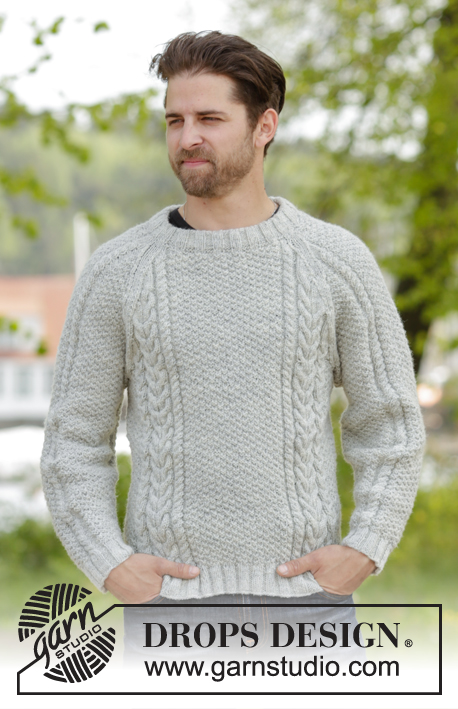 |
||||||||||||||||||||||||||||||
Knitted DROPS men’s jumper with cables, raglan and folding edge at the neck in Karisma. Size: S - XXXL.
DROPS 174-15 |
|||||||||||||||||||||||||||||||
|
PATTERN: See diagrams A.1 to A.6. INCREASE TIP: Work until 1 st remains before marker, 1 YO, work next 2 (marker is between these sts), 1 YO. On next round work YOs twisted. Work the new sts into the pattern. DECREASE TIP 1 (applies to rib): When dec sts in rib, dec evenly by P 2 tog over sections with P in rib. DECREASE TIP 2 (applies to elevation): All dec are done from RS! Work until 4 sts remain before marker, work the next 3 K tog (= 2 sts dec), work the next 2 K (marker is in the middle of these sts), work the next 3 K twisted tog (= 2 sts dec). Repeat at the other marker. RAGLAN: Dec as follows before marker: Work until 3 sts remain before marker, K 2 tog, K 1 (marker is here). Dec as follows after marker: K 1, slip 1 st as if to K, K 1, psso NOTE: When dec sts in stocking st in diagram A.2, A.3, A.4, A.5 and A.6 (i.e. there is not enough sts for cable), continue with K over K and P over P until all sts in diagram have been dec. ---------------------------------------------------------- JUMPER: Worked in the round. BODY: Cast on 268-280-292-316-340-376 sts with Karisma on circular needle size 3.5 mm. K 1 round. Then work rib as follows: * A.2a (= 12 sts), A.3a (= 15 sts), A.4a (= 9 sts), P 1, (K 3/P 3), repeat from (-) 6-6-7-7-8-8 times in total, K 3, P 1, A.5a (= 9 sts), A.3a, A.6a (= 12 sts), (K 3/P 3), repeat from (-) 3-4-4-6-7-10 times in total, K 3 *, repeat from *-* 1 more time on round. Repeat the first 2 round in diagram and work K over K and P over P the remaining sts until 12 rounds have been worked in total. Now work as follows: * Work 3rd round in diagram over the first 36 sts, the work rib as before over the next 41-41-47-47-53-53 sts AT THE SAME TIME dec 11-7-9-9-11-11 sts evenly - READ DECREASE TIP 1, work 3rd round over the next 36 sts, then work rib as before over the next 21-27-27-39-45-63 sts AT THE SAME TIME dec 7-9-5-5-7-9 sts evenly *, repeat from *-* 1 more time on round = 220-236-252-276-292-324 sts. Work last round in diagram A.2a to A.6.a and K over K and P over P over the remaining sts in rib. Rib measures approx. 5 cm. Switch to circular needle size 4 mm. Now work pattern as follows: * Work A.2b (= 11 sts), A.3b (= 13 sts), A.4b (= 9 sts), work A.1 over the next 28-32-36-36-40-40 sts, work the first 2 sts in A.1, A.5b (= 9 sts), A.3b (= 13 sts), A.6b (= 11 sts), work A.1 over the next 12-16-20-32-36-52 sts, work the first 2 sts in A.1 *, repeat from *-* 1 more time. Continue pattern like this in the round. REMEMBER THE KNITTING TENSION When piece measures 15-15-16-16-17-17 cm, insert 2 markers in piece as follows: Insert 1st marker after 103-109-115-121-127-135 sts and 2nd marker 7-9-11-17-19-27 sts before end of round (= 110-118-126-138-146-162 sts between each of the markers). On next round inc 1 st in each side of marker in each side - Read INCREASE TIP! Repeat inc when piece measures 26-27-27-28-28-29 cm = 228-244-260-284-300-332 sts. When piece measures 44-44-45-45-45-45 cm, work as follows: Work until 5 sts remain before 1st marker, cast off the next 10 sts for armhole (= 5 sts on each side of marker), work until 5 sts remain before 2nd marker, cast off the next 10 sts for armhole (= 5 sts on each side of marker), work the remaining sts on round. There are 104-112-120-132-140-156 sts for both front and back piece. Put piece aside and knit the sleeves. SLEEVES: Worked in the round on double pointed needles/circular needle. Cast on 60-60-66-66-66-72 sts with Karisma on double pointed needles size 3.5 mm. Work rib as follows: K 3, (P 3, K 3) repeat from (-) 3-3-4-4-4-5 times in total, A.4a (= 9 sts), K 3, (P 3, K 3), repeat from (-) 3 times in total for all sizes, A.5a (= 9 sts). Continue like this and repeat the first 2 rounds in diagram until 12 rounds have been worked. Now work from the 3rd round in diagram as follows: Work rib as before over the first 21-21-27-27-27-33 sts AT THE SAME TIME dec 3-3-5-5-5-7 sts evenly, continue over A.4a as before, work rib as before over the next 21 sts AT THE SAME TIME dec 3 sts evenly in all sizes = 54-54-58-58-58-62 sts. Work last round in diagram A.4a to A.5.a and K over K and P over P over the remaining sts. Now continue as follows: K the first 9-9-11-11-11-13 sts, insert a marker here (= mid under sleeve). NOTE: This is done to re-place the start of round. The round starts here now. Change to double pointed needles size 4 mm. Work the last 3-3-1-1-1-3 sts in diagram A.1, then work entire A.1 1-1-2-2-2-2 times in width, work the first 2 sts in A.1, A.4b, work A.1 over the next 18 sts, A.5b, work A.1 2-2-2-2-2-3 times in width and finish with the first 1-1-3-3-3-1 st in A.1. Continue pattern in the round like this. When piece measures 7 cm in all sizes, beg inc under sleeve. READ INCREASE TIP. Inc like this every 12th-9th-9th-7th-6th-6th round 11-5-5-17-15-15 times and every 0-8th-8th-0-5th-5th round 0-10-10-0-4-4 times (= 11-15-15-17-19-19 times in total) = 76-84-88-92-96-100 sts. When piece measures 54-53-52-51-49-48 cm (NOTE: shorter measurements in the larger sizes because of longer yoke), cast off 10 sts mid under sleeve (= 5 sts on each side of marker) = 66-74-78-82-86-90 sts. Knit another sleeve the same way. YOKE: Slip sleeves on to same circular needle size 4 mm as body where armholes were cast off (without working them first) = 340-372-396-428-452-492 sts. Insert 1 marker in every transition between sleeves and body = 4 markers. Continue pattern as before but now work 4 K over every transition between body and sleeves (= 2 K on each side of markers). NOTE: Beg of round is at marker in transition between right sleeve and back piece. AT THE SAME TIME on first round, beg dec for RAGLAN – see explanation above! NOTE: Dec differently on body and sleeves. RAGLAN BODY: Dec like this every other round 17-20-20-22-25-26 times and every round 13-13-15-17-17-22 times (= 30-33-35-39-42-48 times in total). RAGLAN SLEEVES: Dec like this every 4th round 4-3-2-3-4-5 times and every other round 16-21-24-25-26-27 times (= 20-24-26-28-30-32 times in total). When all dec for raglan are done, 140-144-152-160-164-172 sts remain. Work 1 round with pattern as before but finish when 24 sts remain on round in all sizes (= after 2 sts after marker between front piece and right sleeve). Insert a marker here. This is now beg of round. Now work an elevation back and forth in the back of neck as follows: NOTE: Continue with pattern as before and now dec 2 sts on each side of marker in transition between sleeves and back piece (= 8 sts dec on row from RS) - READ DECREASE TIP 2! AT THE SAME TIME work back and forth as follows: ROW 1 (= RS): Work 92-94-98-102-104-108 sts (including the 8 dec sts), ROW 2 (= WS): Turn and work 81-83-87-91-93-97 sts, ROW 3: Turn and work 78-80-84-88-90-94 sts (including the 8 dec sts), ROW 4: Turn and work 67-69-73-77-79-83 sts, ROW 5: Turn and work 64-66-70-74-76-80 sts (including the 8 dec sts), ROW 6: Turn and work 53-55-59-63-65-69 sts, ROW 7: Turn and work 50-52-56-60-62-66 sts (including the 8 dec sts), ROW 8: Turn and work back to marker (= beg of round). 32 sts have been dec in total in elevation and 108-112-120-128-132-140 sts remain on round. Switch to circular needle size 3.5 mm. Now work 1 round K as follows: Work the first 14 sts and inc 1 st (= sleeve), work the next 4 sts, then work the next 24-26-30-34-36-40 sts (= back piece) while inc 3-1-3-5-3-5 sts evenly, work the next 4 sts, work the next 14 sts and inc 1 st (= sleeve), work the next 4 sts, work the next 40-42-46-50-52-56 sts (= front piece) while dec 1-3-1-5-1-5 sts evenly, work the remaining 4 sts = 112-112-124-130-136-142 sts. Now work rib as follows: P 3, K 3, P 3, K 3, P 3, K 4, (P 3, K 3), repeat from (-) 4-4-5-6-6-7 times in total, P 3, K 4, P 3, K 3, P 3, K 3, P 3, K 4, (P 3, K 3), repeat from (-) 6-6-7-7-8-8 times, P 3, K 4. Continue in the round with K over K and P over P until rib measures 7 cm. Loosely cast off. ASSEMBLY: Sew the openings under the sleeves. Fold rib at the top of neck down on inside of garment. Fasten rib to get a folding edge, make sure to avoid a tight edge. |
|||||||||||||||||||||||||||||||
Diagram explanations |
|||||||||||||||||||||||||||||||
|
|||||||||||||||||||||||||||||||
 |
|||||||||||||||||||||||||||||||
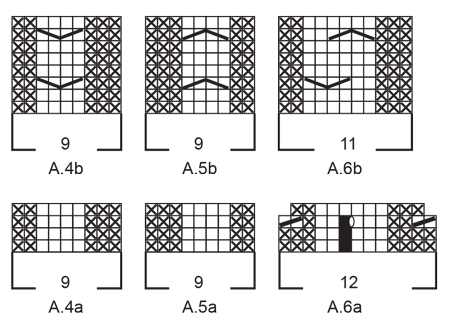 |
|||||||||||||||||||||||||||||||
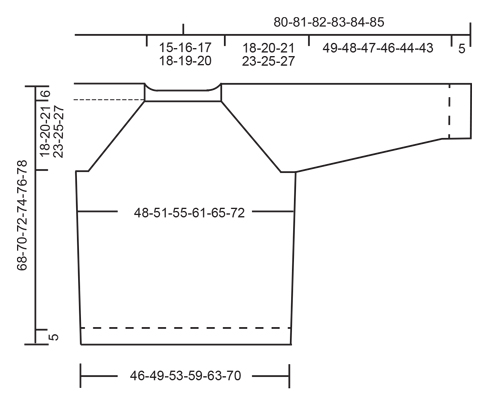 |
|||||||||||||||||||||||||||||||
Have you finished this pattern?Tag your pictures with #dropspattern #therowersweater or submit them to the #dropsfan gallery. Do you need help with this pattern?You'll find 34 tutorial videos, a Comments/Questions area and more by visiting the pattern on garnstudio.com. © 1982-2025 DROPS Design A/S. We reserve all rights. This document, including all its sub-sections, has copyrights. Read more about what you can do with our patterns at the bottom of each pattern on our site. |
|||||||||||||||||||||||||||||||







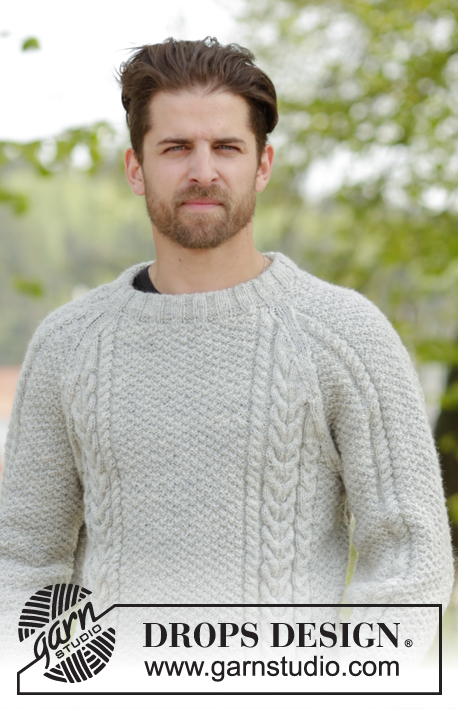
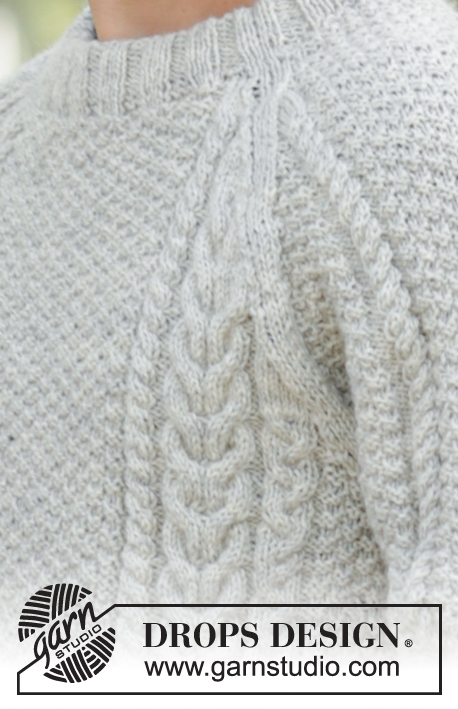

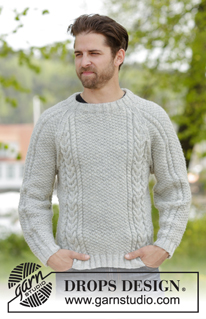
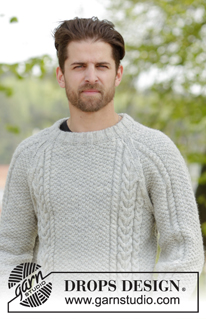
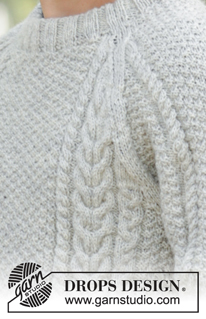





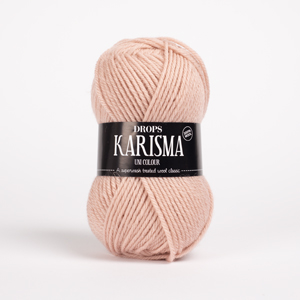




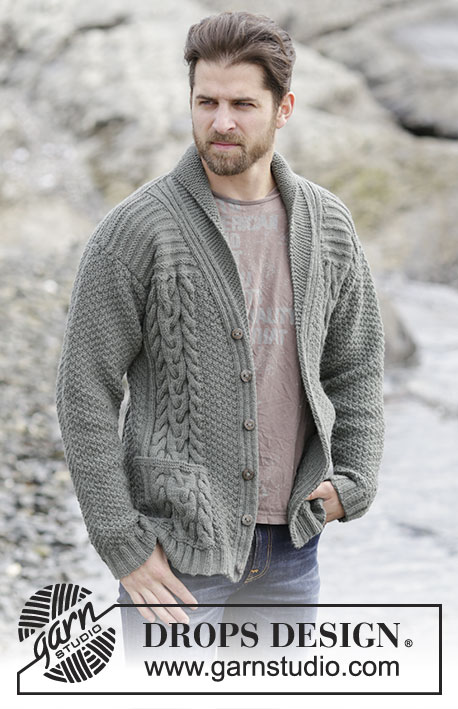






























































Post a comment to pattern DROPS 174-15
We would love to hear what you have to say about this pattern!
If you want to leave a question, please make sure you select the correct category in the form below, to speed up the answering process. Required fields are marked *.